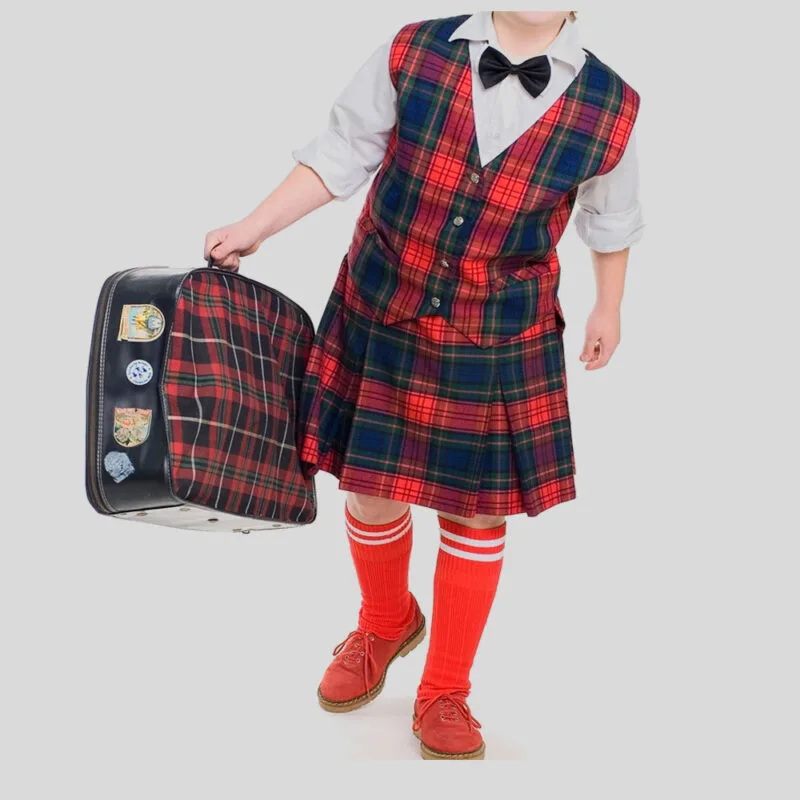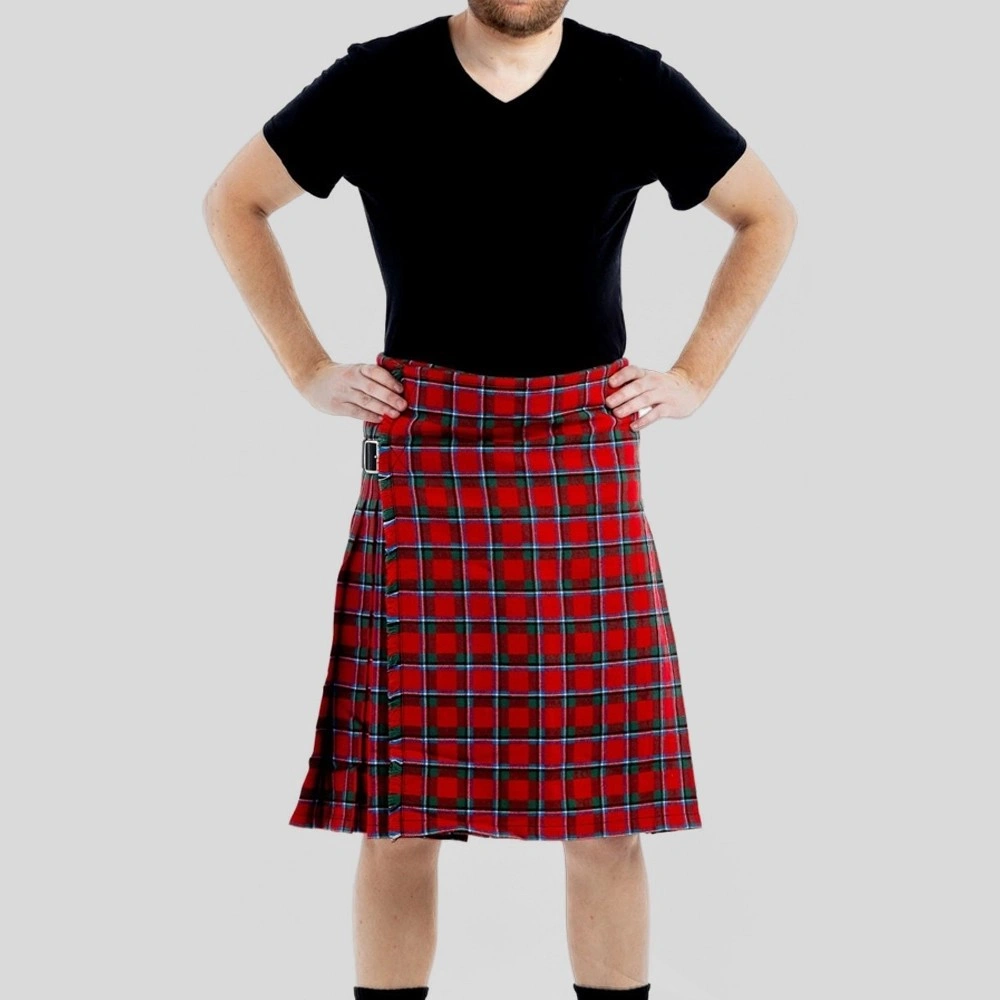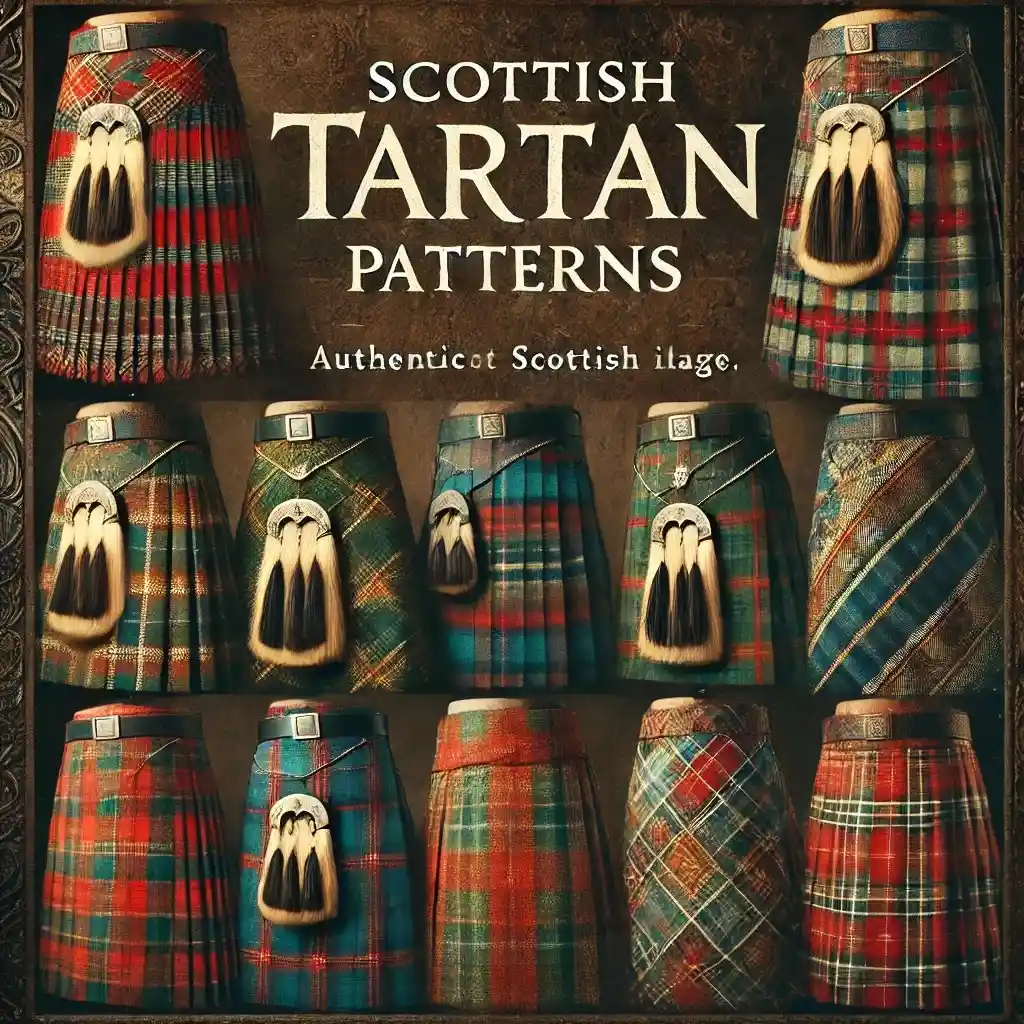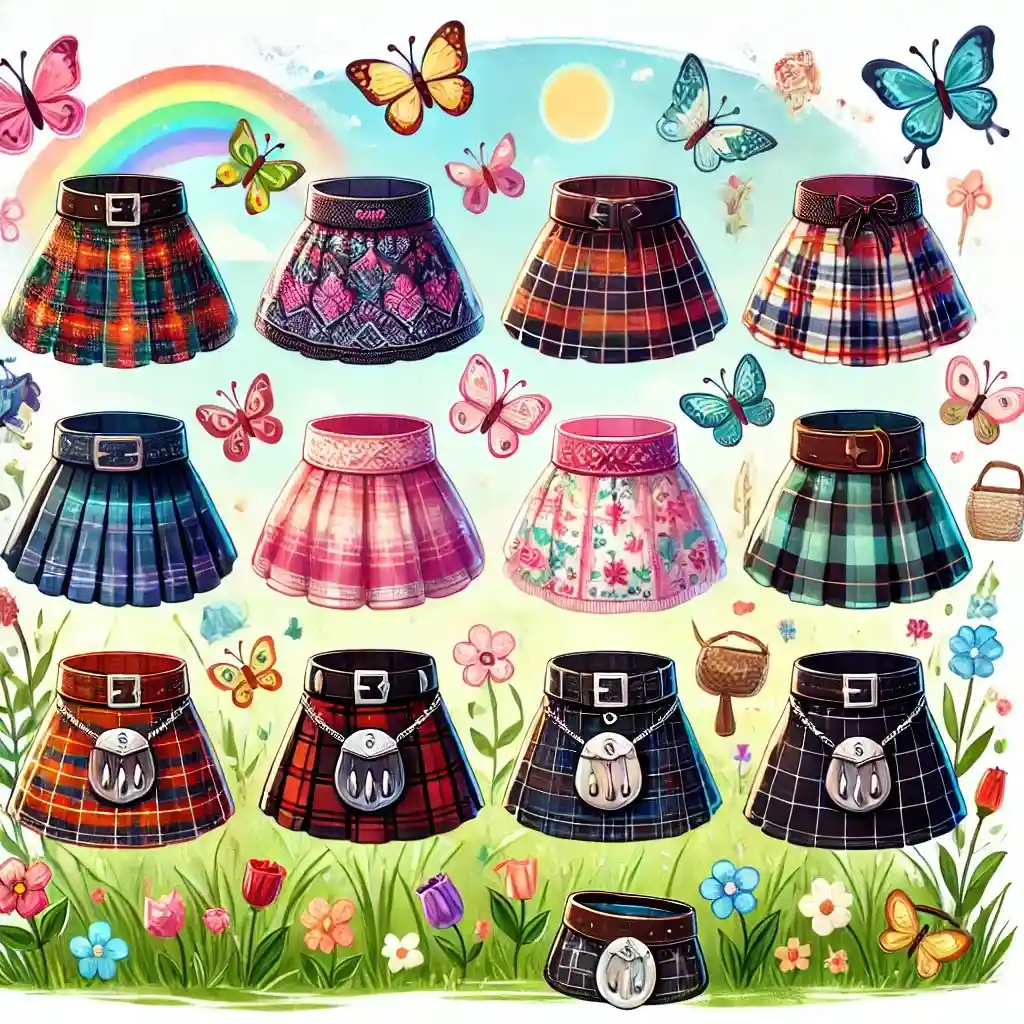Kilted skirts have both a distinct cultural significance and practical appeal to children. Growing from the roots of Scottish traditions, these pieces of clothing can be worn for all events ranging from formal occasions to informal functions. Besides, kilts encompass ease of movement making them a better outfit for kids who love playing. Most importantly, they come in diverse designs so that parents can purchase kilts for kids whose designs meet the individual children’s preferences and character.
Understanding the Traditional Scottish Kilt
The Scottish kilt epitomizes legacy and has its roots in the Highland society around the 1500s. Woven woolen kilts would traditionally be made with the family clan’s specific tartan. Presently, the hybrid kilts for kids is worn by either gender for both informal get-togethers and official occasions all over the world, and the depreciation of the leather kilt’s significance as a proud Scottish item is not even mentioned. It is common knowledge that a taran kilt is filled with deep meaning history and cultural appreciation therefore fashion is never the intent of simply wearing it.
Benefits of Wearing Kilts for Kids
For the children in the first place, it is ease of wear that is at the forefront to congratulate. The piece includes pleats that allow children to move around easily, and that is perfect for active children. Leather Kilts are also airy, which keeps the user comfortable during hot seasons. Further, children can benefit from the wearing of a tactical kilt in that they can learn to appreciate one of their cultures if they have Scottish roots, especially in this ever-changing society that disrespects tradition and history, in a more enjoyable and wearable manner.
Different Types of Kilts for Kids
There are following different types of kilts for kids:
- Traditional Scottish Kilt
A classic Scottish leather kilt bottom of a man’s kilt is traditionally pleated at the back yoke made from wool. It is most often decorated with clan or family tartans and is worn at uplifting events like weddings and highland games. It is carried along because of its rich history and beauty by kids who want to dive into the Scottish way of life.
- Casual Kilt
The casual kilt outfits are for active children. These kilts are made from less heavy materials such as cotton or polyester thus they are easy to wear and clean. These types of kilts are suitable for kids who are active and require unrestricted
- Utility Kilt
While classic designs have not lost their appeal, utility kilts offer a modern slant to the old design and feature aspects such as pockets and durable materials. They are great for active children who require both form and function thereby making them perfect for outings and outdoor engagements.
- Sports Kilt
Sports kilts are low-hanging waist garments cut in a way to enhance movement and comfort as can be made from synthetic and breathable fabrics. They are lightweight and suitable for most sporting activities such as Highland dancing or sporting exercises. These are like traditional kilts regarding style freedom but constructed for active children who need to keep cool and light.
Choosing the Right Fabric for a Child’s Kilt
The comfort and origin preservation tolerance should be guided by the type of fabric selected for the child’s kilt. Wool has always been the fabric of choice since it is warm and has a traditional appearance. Nowadays, lightweight cotton and polyester are also used as they are ideal for casual wear and hot climates. Cotton is light and allows for air circulation but does not wear as well as polyester which is light as well. When selecting the fabric of your child’s kilt do consider the climate and the event.
Selecting the Perfect Tartan for Your Child
It can be difficult to choose the tartan for your child’s kilt, especially if the child is too young to understand the background of this piece of clothing. In case your family has Scottish roots, the best option would include choosing a particular clan tartan, that can signify one’s culture. On the other hand, some added universal tartans may be worn by all regardless of their nationality. Another way to make the kilt more fun is to choose a tartan that represents something your child likes or their personality.
What Length Should a Child’s Kilt Be?
It is essential to find the right length of the kilt for a kid not only to keep the child comfortable but also to follow the traditions. A leather kilt is preferably expected to fall at the midway of the knee providing sufficient cover without hindering movement. For measurement start from the waist down to the level that is comfortable for the child being measured. If they are too long, they may limit movement and if they are too short, they may be not very fashionable.
Waist Adjustability: Making Sure the Kilt Fits Comfortably
Since children tend to outgrow clothing Kaitlyn Davis a waistline periodically adjustable with a denim kilt can be convenient. Most available kilt kilts for children on the market today come with straps or elastic waistbands that stretch to the size of the child as he grows. This makes certain that the tartan kilt is pressed down well and fitting after a long time has lapsed hence the kilt is practical. Do check the waistband adjustability otherwise, you might not enjoy comfort and flexibility for a long time.
How to Choose a Kilt for Different Occasions
Kilts for kids can be worn in such a way that they can suit any occasion from the most formal to the least formal. For weddings or highland games which are formal events, family tartan patterns and traditional wool kilts are very appropriate. Low-slung cotton or functional utility kilts are ideal for young children who are out and about and require ease of mobility. For function and putting these garments over one’s body, the kilt is ideal for any occasion regardless of when or where it is worn.
Accessories to Complete the Kilt Look
- Kilt Pins
Kilt pins are important accessories because they are decorative and practical. They weigh down the kilt’s front apron, allowing movement without the kilt flapping. Kilt pins come in various styles, many of which are decorated with Celtic insignia, family crests, and other symbols, making them an important addition to a kid’s kilt.
- Scottish Hats and Caps
Kilt ensembles are also incomplete without Scottish hats like the Glengarry or Balmoral. These hats contribute to the overall kit because they usually come with a pom pom or a clan badge attached to the hat. Moreover, everyday outings such as going out with a child in a kilt can have a more flat view of pairing a basic simple cap with the child’s kilt.
- Wallets and Handbags
Sporrans considered small purses are often worn together with kilts; they also come in handy for carrying stuff. Most sporran types used these days are semi-decorative as conceal factors are no longer present in common sporran, which embellishes children with a useful accessory.
- Ties
A properly selected tie serves not only decorative purposes but also makes the overall tartan kilt design more complete and meaningful at the right time intervals in particular. Most commonly, tartan ties that are similar in color to the leather kilt and the jacket worn underneath the kilt are worn. However, quite often it also depends on the degree of formality of the event and one can use solid ties instead.
- Shoes
The ghillie brogues are the ancestors of kilt shoes today, they are very distinctive in shape, with the laces winding around the ankles. Moreover, they provide a touch of class and history to the kilt dressing. However, when it comes to relaxed settings, a kilt could also be teamed with dress shoes or even boots for ease and practicality.
- Socks
Known as the Hose, kilt socks are usually worn to knee level and are rolled down at the top to form a cuff. There are many colors available for the seems depending on the tartan or attire. Traditionally, the flashes (strips of fabric) worn with the socks have also served a functional purpose by helping hold the socks in place as well as providing a contrast to the socks to complete the traditional look.
Kilt Jackets and Footwear: What to Pair with a Kid’s Kilt
One must also pick the right jacket and the right footwear to go with the child’s kilt. The traditional Prince Charlie jackets are best suited for formal occasions, conversely, the Argyle jackets do enhance a more relaxed but still polished appearance. When discussing shoe wear, ghillie brogues tend to be the most common ones worn, however, within less formal settings, dress shoes or boots will suffice. The addition of the appropriate jacket and the right kind of shoes enhances the aesthetic appeal of the kilt dressed up.
Caring for a Child’s Kilt: Cleaning and Maintenance Tips
There are the following tips to clean your child’s kilt better and to maintain it for a long time:
- Dry Clean for Best Results
When it comes to woolen kilts, especially the traditional ones, the best way to have them cleaned is to have them dry-cleaned. This avoids the risk of shrinkage and damage to the fabric. It is good to have regular dry cleaning sessions no how often the kilt is used so that it helps to retain the shape as well as the color of the kilt especially if using it for official occasions.
- Spot Clean Small Stains
For small stains or spills, hand wash the section of the kilt with mild soap and water. Be sure to only thinly coat the spot with the liquid instead of scrubbing it to prevent any possible harm to the fabric. Such a method can help increase reaching out for a professional cleaner.
- Air the Kilt After Each Wear
The kilt can be kept clean by hanging it on a well-aerated area after every use. This helps in getting rid of any smell and enables the fabric the give off moisture, particularly for the kilt that has been worn for too long.
- Store Properly
Kilts should be taken care of by storing them in a full-length garment bag and hanging the garment to avoid dirt and moisture. Ensure that the pleats are well arranged to avoid creasing. Do not keep the kilt folded as this will form permanent sharp creases.
- Iron Carefully
Should there be any creasing in the kilt you may iron it simply and slowly with a cool iron while also using a press cloth, focusing on the pleats in particular. Adhere to the recommendations given on the care label regarding the fabric to prevent any potential heat damage caused to the wool kilts.
Budgeting for a Child’s Kilt: How Much Should You Spend?
Kilt prices for children vary depending on the kind of material, quality, and embellishments used on them. A simple ready kilt costs anywhere around the range of $50 – $100, while ready-fitted kilts require good fabrics and may go for about $150 – 300. Other items like sporrans, belts, and jackets will also increase the costs. Therefore it’s advisable to plan not just for the kilt but also the other fitments to make sure that one can get quality service without going overboard.
Custom vs. Off-the-Rack: Which Kilt Option is Best?
Whether to select a tailored kilt or an off-the-rack alternative is a choice that is premised on personal priorities and financial limitations. Tailor-made kilts fit in the best and come with chosen tartans but that can be on the higher side. Kilt off the shelf is economical, kilt off the shelf is economical and may even provide a very good fit, especially for fast-growing children. How important the event will be, the child’s requirement and the predicted period the kilt will be used are aspects that should be looked into while deciding between a child’s kilt-tailored and ready-to-wear gari.
Age-Appropriate Kilt Styles for Kids
Kilt design can differ due to the age factors of the child wearing the kilt. Young children can put on light easy comfortable kilts made of cotton or polyester for normal day uses. Growing up girls might wear dressy occasions more traditional women’s wool kilts. Practical functional utility kilts with pockets are more for older kids who want practical uses. However, appropriate construction of the style should also consider the level of comfort and style of the child.
Kilt Sizing Guide: How to Measure Your Child Correctly
Getting the correct sizes will ensure that your child’s kilt will fit perfectly. Measure the waist at the level of the navel and also the distance between the waist and an imaginary line on the mid-knee cap. For extra tight fit, look for the measurement of the hips. Spending some time to take accurate measurements will help to prevent the situation where the child’s kilt does not fit well or is uncomfortable during different wears.
Where to Buy High-Quality Kilts for Kids
“Most of the Scottish heritage shops have ready-to-wear and made-to-measure options for children. Kids Scottish kilts would be found in such well-known stores as Scotland Kilt Company or USA Kilts which have an endless range of products and a guarantee of excellent service.”
Purchasing a child’s kilt is a matter of tradition, fashion, and indeed comfort. Fashionable or not, a kilt that the wearer will love will always be practical and historically relevant. There are ways of making sure that a kilt is a worthwhile addition to any child’s wardrobe irrespective of the active Scottish kilt wearer who cares about the fit, fabric(s) used, and occasions for wearing a kilt.




